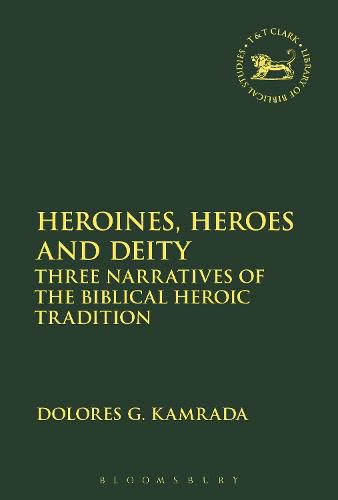Readings Newsletter
Become a Readings Member to make your shopping experience even easier.
Sign in or sign up for free!
You’re not far away from qualifying for FREE standard shipping within Australia
You’ve qualified for FREE standard shipping within Australia
The cart is loading…






Kamrada’s study analyses three narratives concerning the greatest heroic figures of the biblical tradition: Jephthah’s daughter, Samson and Saul, and includes a consideration of texts about King David. All three characters are portrayed as the greatest and most typical and exemplary heroes of the heroic era. All three heroes have an exceptionally close relationship with the deity all die a traditionally heroic, tragic death. Kamrada argues that within the Book of Judges and the biblical heroic tradition, Jephthah’s daughter and Samson represent the pinnacle of female and male heroism respectively, and that they achieve super-human status by offering their lives to the deity, thus entering the sphere of holiness.
Saul’s trajectory, by contrast, exemplifies downfall of a great hero in his final, irreversible separation from God, and it also signals the decline of the heroic era. David, however, is shown as an astute hero who founds a lasting dynasty, thus conclusively bringing the heroic era in the Deuteronomistic history to a close.
$9.00 standard shipping within Australia
FREE standard shipping within Australia for orders over $100.00
Express & International shipping calculated at checkout
Kamrada’s study analyses three narratives concerning the greatest heroic figures of the biblical tradition: Jephthah’s daughter, Samson and Saul, and includes a consideration of texts about King David. All three characters are portrayed as the greatest and most typical and exemplary heroes of the heroic era. All three heroes have an exceptionally close relationship with the deity all die a traditionally heroic, tragic death. Kamrada argues that within the Book of Judges and the biblical heroic tradition, Jephthah’s daughter and Samson represent the pinnacle of female and male heroism respectively, and that they achieve super-human status by offering their lives to the deity, thus entering the sphere of holiness.
Saul’s trajectory, by contrast, exemplifies downfall of a great hero in his final, irreversible separation from God, and it also signals the decline of the heroic era. David, however, is shown as an astute hero who founds a lasting dynasty, thus conclusively bringing the heroic era in the Deuteronomistic history to a close.